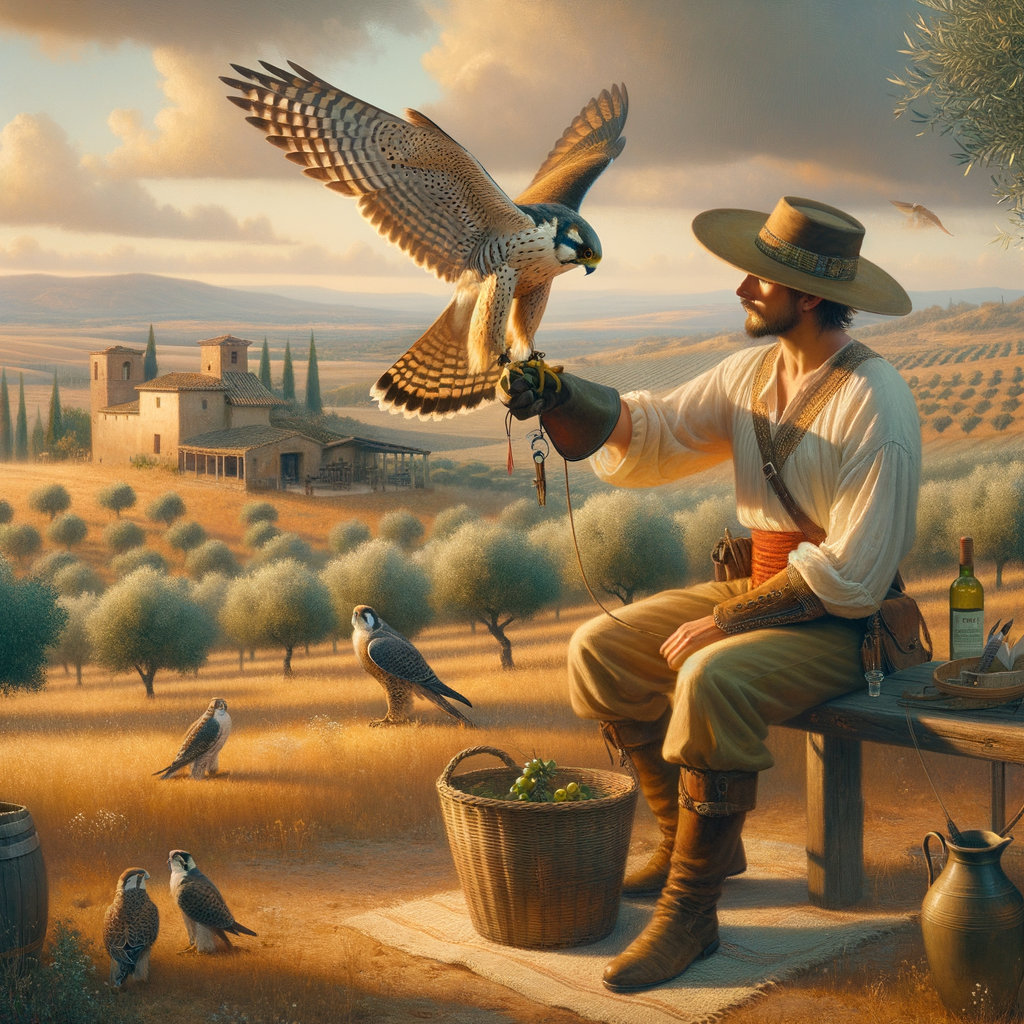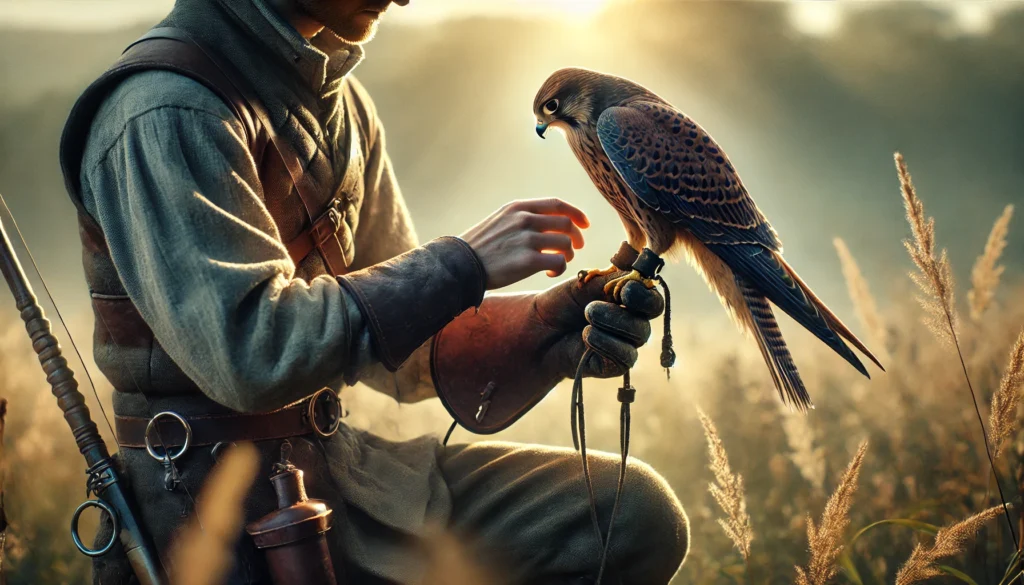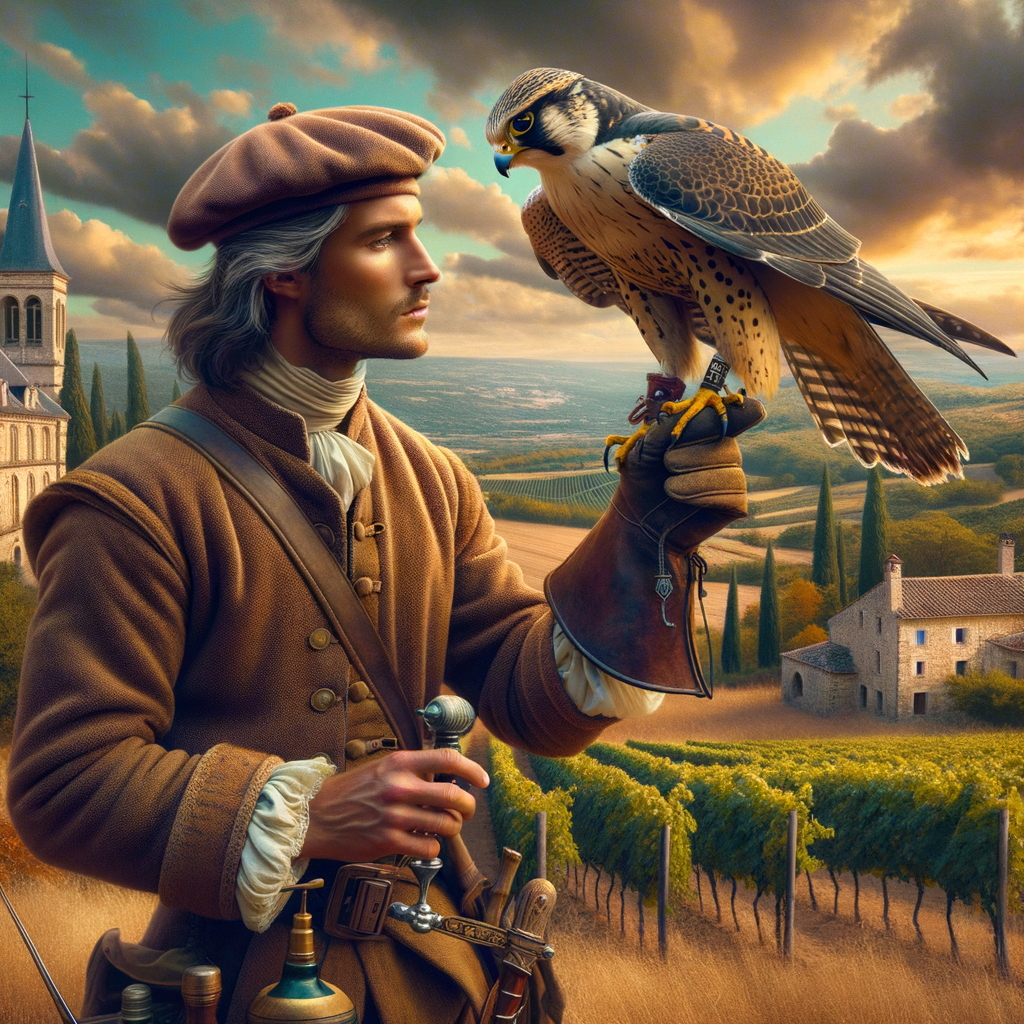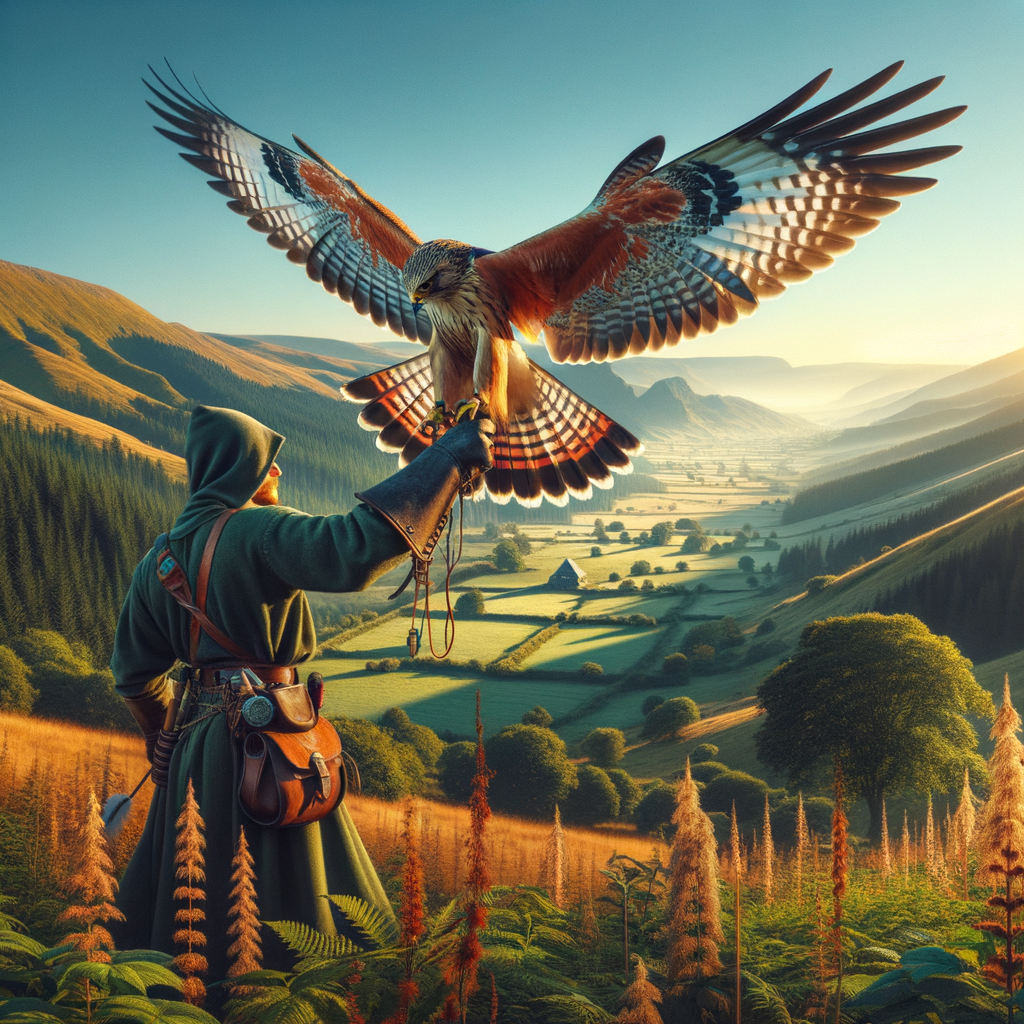Falconry in Spanish Culture: Key Highlights
- Rich Historical Background: Falconry has deep roots in Spanish culture, dating back centuries.
- Royal Endorsement: It was a pastime favored by Spanish royalty and noble families.
- Cultural Significance: Falconry is an integral part of Spain’s heritage, symbolizing nobility and adventure.
- Traditional Craftsmanship: Spanish falconers are known for their beautifully crafted falconry equipment.
- Modern-Day Practice: Today, falconry in Spain blends traditional techniques with modern conservation efforts.
- Environmental Impact: Falconry promotes awareness and preservation of bird species and their habitats.
- Educational Programs: Learn Falconry offers programs that teach the art and science of falconry, reflecting this rich cultural tradition.
Discovering the Rich World of Falconry in Spanish Culture
Hey there, bird enthusiasts! Did you know that falconry is much more than just a sport? It’s a fascinating blend of tradition, art, and history that stretches back thousands of years. Picture this: just like how the Irish cherish their storytelling traditions and vibrant dance forms, Spanish culture has woven a beautiful tale around falconry. And let me tell you, it’s a story worth diving into!
Here at Learn Falconry, we believe in the magic of connecting with nature’s finest flyers and understanding the deep cultural roots that come with it. Falconry in Spain isn’t just about training birds of prey; it’s a dance of respect, skill, and heritage. Imagine knights and noblemen of old, much like the legendary Gaelic heroes, gracefully commanding their feathered companions to hunt with unmatched precision.
Intrigued yet? Well, keep reading as we explore how this majestic tradition evolved in Spain, its significance, and why it remains a cherished practice today. Trust us, the tale is as thrilling as a swift falcon diving from the sky!
Spanish Falconry: A Rich Tradition in the Iberian Peninsula
Falconry, the ancient art of training raptors to hunt, holds a special place in the culture and history of Spain. This fascinating practice, known as Spanish falconry, has deep roots and a vibrant tradition that has been passed down through generations. Let’s dive deeper into the rich history and unique customs of falconry in Spain, also known as falconry in the Iberian Peninsula.
Origins and History of Spanish Falconry
Spanish falconry dates back to ancient times when the Iberian Peninsula was a melting pot of different cultures and civilizations. The Moors, who occupied large parts of Spain during the medieval period, played a significant role in introducing and popularizing falconry in the region. The influence of these early falconers is still evident in the techniques and equipment used today.
If you’re interested in exploring even deeper into the origins of falconry around the world, you can visit our Ancient Origins of Falconry page.
Spanish Falconry Traditions
Spanish falconry traditions are rich with unique customs and practices that distinguish them from those in other parts of the world. One notable tradition is the use of special hoods, which are intricately crafted and decorated, to calm the birds during transportation and training (Types of Hoods). Additionally, the type of falconry gloves used in Spain are designed to protect the falconer and ensure they have a firm grip on their bird (Falconry Gloves).
Much of the traditional training techniques used in Spanish falconry are based on a deep understanding and respect for the birds. These methods are passed down through generations and remain vital in the practice today. For more insights into traditional methods, our Traditional Falconry Methods section provides detailed explanations.
The Role of Falconry in Spanish Culture
Falconry in Spain is not just a sport or a hobby; it’s an integral part of the cultural heritage. It is celebrated in festivals and demonstrations where falconers showcase their skills and the beauty of their birds. These events are a testament to the deep connection between the people and their raptors. For more about how falconry is interwoven with other cultures, check out our page on Falconry in Various Cultures.
Modern Spanish Falconry
Today, Spanish falconry continues to thrive, blending traditional practices with modern advancements. The use of advanced telemetry and GPS technology helps falconers keep track of their birds during flights. There is also a growing emphasis on conservation and ethical practices to ensure that falconry remains sustainable for future generations (Sustainable Falconry Practices).
If you’re interested in learning more about the evolution of falconry techniques over time, we recommend visiting our Evolution of Falconry Techniques page.
Getting Started with Falconry in Spain
For beginners eager to start their journey in falconry, understanding the unique traditions and requirements in Spain is crucial. From choosing the right bird (Choosing Your First Falcon) to acquiring the necessary equipment (Basic Falconry Equipment), there are many steps involved. A great start is to join a falconry club, where experienced falconers can mentor newcomers (Joining a Falconry Club).
Visit our Beginners Guide to Falconry to find all the information you need to get started.
With such a rich heritage and ongoing advancements, Spanish falconry continues to be a beloved practice that bridges the past with the present. Whether you are a seasoned falconer or a curious beginner, the traditions of Spanish falconry offer a fascinating glimpse into a world where humans and birds have forged an extraordinary bond.
Falconry and Spanish Culture in 2024
Falconry’s Historical Roots in Spain
Falconry in Spain has a rich history spanning over 2,000 years. It was first brought to the Iberian Peninsula by the Moors during their occupation in the 8th century. This ancient sport became a noble pursuit, often associated with royalty and high-ranking nobility. One of the most notable works documenting this tradition is “El Libro de La Caza,” written in 1329 by Don Juan Manuel, Prince of Villena. This book illustrates the importance of falconry in medieval Spanish society.
UNESCO Recognition
In 2010, falconry in Spain was acknowledged by UNESCO as an Intangible Cultural Heritage, recognizing its cultural importance and the way it has been passed down through generations. Along with 17 other countries, Spain continues to promote and preserve this ancient practice.
Modern Practices of Falconry
Today, falconry in Spain is practiced by various clubs and hunting preserves. These organizations focus on breeding birds of prey, conserving their habitats, and allowing the public to engage with these fascinating creatures. Visitors can experience handling birds such as falcons, hawks, and eagles, fostering respect for nature and wildlife.
Falconry and Conservation Efforts
| Species | Population Focus | Conservation Efforts |
|---|---|---|
| Eastern Imperial Eagle | Breeding and reintroduction programs | Encouraging population growth |
| Osprey | Breeding and habitat restoration | Coastal and inland waterway reintroduction |
| Barbary Falcon | Canary Islands | Monitoring and genetic studies |
Conservation centers throughout Spain play crucial roles in the breeding and rehabilitation of vulnerable species such as the Eastern Imperial Eagle and the osprey. The Barbary falcon, a subspecies of the peregrine falcon found in parts of North Africa, including the Canary Islands, is also a focus of these conservation efforts.
Falconry in Airport Safety
| Airport | Number of Falcons | Role |
|---|---|---|
| Barcelona’s El Prat | 80 | Patrolling and reducing bird strikes |
| Madrid’s Barajas | 70 | Ensuring runway safety |
Falconry has found a modern and practical application in enhancing airport safety. At Barcelona’s El Prat Airport, a team of 80 falcons is employed to patrol the skies and prevent bird strikes that could endanger aircraft. Similarly, Madrid’s Barajas Airport utilizes a fleet of 70 peregrine falcons for the same purpose. As a result, 95% of major Spanish airports now incorporate falconry into their safety protocols, effectively reducing the number of incidents.
Falconry and Community Engagement
Falconry is not only a sport but also a social tradition that promotes environmental stewardship. Communities that practice falconry share a deep respect for nature and a sense of identity and continuity through this age-old practice. This tradition brings communities together, fostering a collective sense of pride and belonging.
Falconry Market Milotice 2024
An important event in the falconry calendar is the Falconry Market Milotice 2024, scheduled for July 13 at Milotice Castle. Sellers will showcase and trade falcons, following stringent documentation and certification requirements. This market is a significant event for enthusiasts and professionals alike, highlighting the thriving nature of falconry in contemporary Spanish culture.
Falconry in the Canary Islands
The Canary Islands host a unique subspecies known as the Barbary falcon. On Tenerife, the largest Canary Island, Barbary falcons have a population density of approximately 1.27 pairs per 100 km², with an average distance between pairs of 5,869 ± 3,338 meters. This falcon population is carefully monitored to understand and prevent genetic mixing between native and outside individuals, ensuring the purity of the subspecies.
Falconry continues to be a vital and dynamic part of Spanish culture, combining ancient traditions with modern applications and conservation efforts.
Falconry’s Rich Heritage and Modern Significance in Spanish Culture
Falconry, a practice with a 2,000-year-old history in Spain, introduced by the Moors, has deeply woven itself into the fabric of Spanish culture. Known originally as a sport of kings, this ancient art is much more than a historical pastime; it’s a living tradition recognized by UNESCO as an intangible cultural heritage.
In today’s Spain, falconry continues to thrive by embracing both its historical roots and modern applications. It’s a prominent activity in regions like Andalucia, home to a significant population of red-legged partridges. Modern falconry clubs and hunting preserves allow enthusiasts to breed and protect these majestic birds of prey.
Moreover, falconry has also proved its practical value in contemporary society, especially in airport safety. Falcons are employed at major Spanish airports such as Barcelona’s El Prat and Madrid’s Barajas to protect against bird strikes, significantly reducing these incidents and ensuring safer air travel.
Falconry’s contribution to biodiversity conservation cannot be overlooked. It plays a key role in breeding and reintroducing vulnerable species like the Eastern Imperial Eagle and osprey back into their natural habitats.
In essence, falconry in Spain is a tradition that beautifully bridges the past and present, combining cultural heritage, community engagement, and practical applications to shape a sustainable future.



